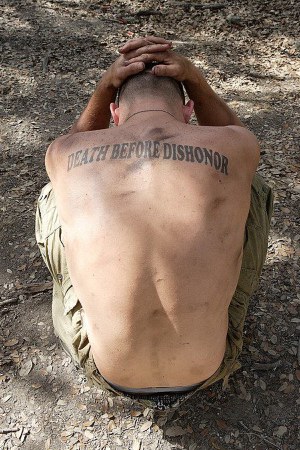channing tatum - stop loss production notes
|
The Vow 2012
21 Jump Street 2012
Haywire 2012
The Son of No One 2011
Dear John 2010
Fighting 2009
Stop-Loss 2008
Step Up 2006
She's the Man 2006
|
 victor Rasuk was cast in the role of Rico Rodriguez, a role that required the application of special make-up and extensive prosthetics, including contact lenses that blinded Rasuk, to convey the horrible injuries Rico suffers in battle. Rasuk elected to keep the contact lenses in during his scenes and the constricting prosthetics caused him to limp; often, Peirce or Phillippe would guide him to his mark on set or towards a chair in between takes, much as they would have done to his severely wounded character. victor Rasuk was cast in the role of Rico Rodriguez, a role that required the application of special make-up and extensive prosthetics, including contact lenses that blinded Rasuk, to convey the horrible injuries Rico suffers in battle. Rasuk elected to keep the contact lenses in during his scenes and the constricting prosthetics caused him to limp; often, Peirce or Phillippe would guide him to his mark on set or towards a chair in between takes, much as they would have done to his severely wounded character.“For me, the prosthetics helped me with the character. My arm was bound behind my back and it hurt like hell, so I incorporated that into my character, as part of his literal and emotional pain. I wanted to keep the contacts in because I honestly felt like I was in the dark, as Rico would. I couldn’t see anything. When the cast and crew walked around me, I didn’t know where anyone was or who they were, I saw only shadows. It was very helpful,” Rasuk says. who they were, I saw only shadows.
Rasuk adds that Peirce understood his desire to use the prosthetics but her guidance helped him navigate not just his temporary blindness but also his acting.
“At first, the contacts were making me really cerebral, I spent too much time inside my head, so my acting was too forced. Kim stopped everything; she took me aside and gave me a heart-to-heart, not just like a director to an actor, but like an actor to an actor, she really understood the process. She takes such good care of her actors and I really appreciated that, ” Rasuk says.
Rico recuperates at an Army Medical Center, for which the production used the Austin State School, home to about 436 people with developmental disabilities. Several of the school’s buildings had fallen into disrepair, including the ones chosen for Rico’s scenes. The art and set decoration departments revamped several interiors, which included the painstaking and costly business of removing asbestos. The production donated the freshly painted, restored facilities to the State School, which intended to turn them into art rooms for the residents.
Far from the plains and small towns of Texas, the cast and crew traveled to Morocco where they joined forces with additional crew from Czechoslovakia, Spain and Morocco to film a pivotal battle scene which is set in Iraq early in the film. “In the film, our key characters have served together in Afghanistan and Iraq for a while, and have remained relatively unscathed. They are on a final mission before returning home, a mission which alters their destiny,” explains Peirce. “They encounter a roadblock, and are drawn into an ambush resulting in some severe casualties. In order to save his remaining comrades, Sgt. Brandon King must make agonizing decisions—decisions which will haunt him long after he has returned home.” ome.”
The choice of Morocco as the location for shooting this important Iraq- based battle proved to be a fortuitous one. “Morocco is amazing and the people were so warm and welcoming,” recalls Peirce of the experience. “For me, there was a whole layer of sensitivity regarding our company coming into this Islamic country and into their space. The scene we shot involved a military raid, so when we were shooting in Marrakech, we were going into the actual homes of these people, not a set on some soundstage. It was very humbling being over there—I was so impressed with their sense of community and their hospitality toward us.”
“We were careful to lay out the specifics of the scene when working with Moroccan officials to organize the shoot,” adds producer Gregory Goodman. “We were very sensitive to the fact that we were essentially depicting the invasion of a neighborhood, so we worked closely with our contacts there early on in terms of scene requirements, logistics and security, so they would know what to expect during our time there. The King of Morocco, the officials and the community of Marrakech were all incredibly helpful and cooperative—It was a terrific experience.”
The filmmakers hope that the characters and the story of “Stop-Loss” will resonate with audiences. For Phillippe, “Stop-Loss” is essentially a personal tale. “I see it as a unique set of circumstances, not a sweeping indictment of any group, or of the military, or the Administration,” he says. “Although it does say something about the situation we’re in, what’s at the heart of the drama is what happens to these guys when they come back home and can’t cope. One guy’s wife leaves him and he’s got a drinking problem. The other guy is having posttraumatic stress disorder…it’s about the ramifications of war, and the sorrow that can be reaped.”
“This movie is definitely pro-soldier,” says Peirce. “It may not be pro the Stop-Loss policy. But we have tried to honor and to show with great compassion and understanding the unique experience of these brave men and women and the effect that war has, not only on them, but on their families, friends and everyone around them.”
|